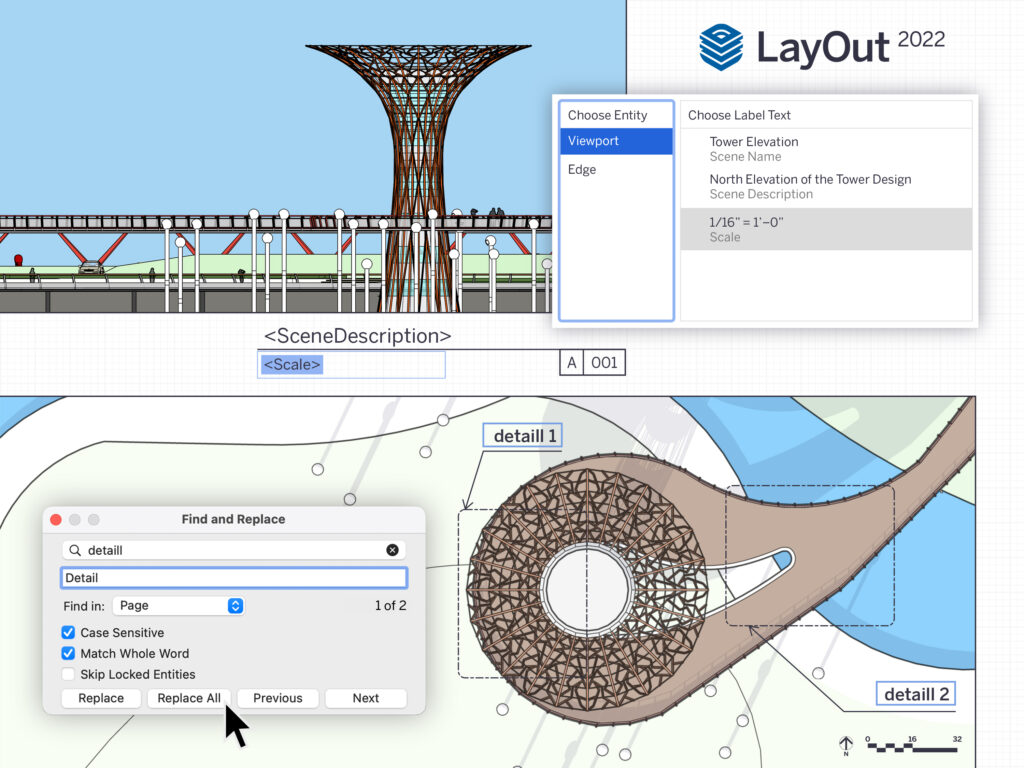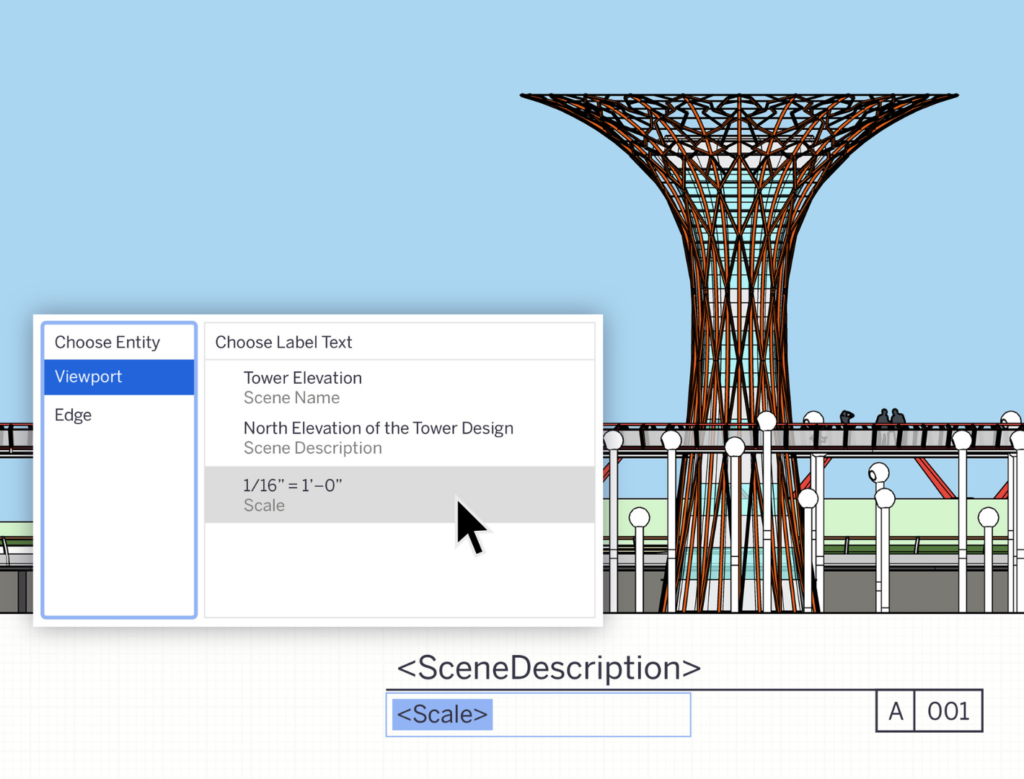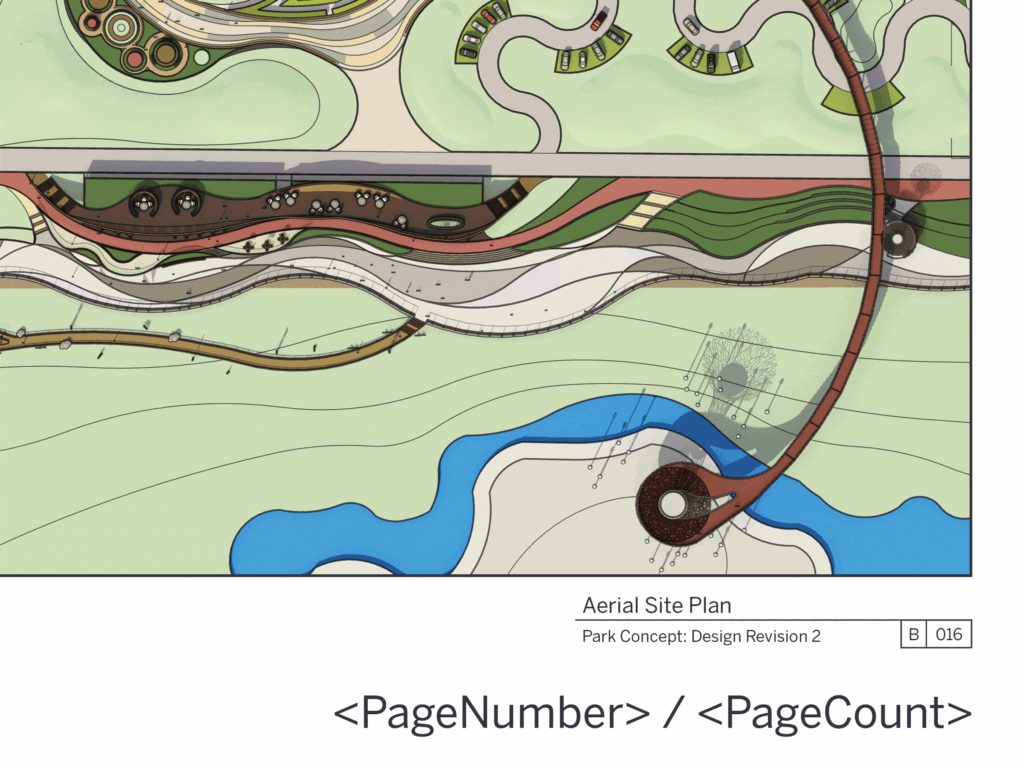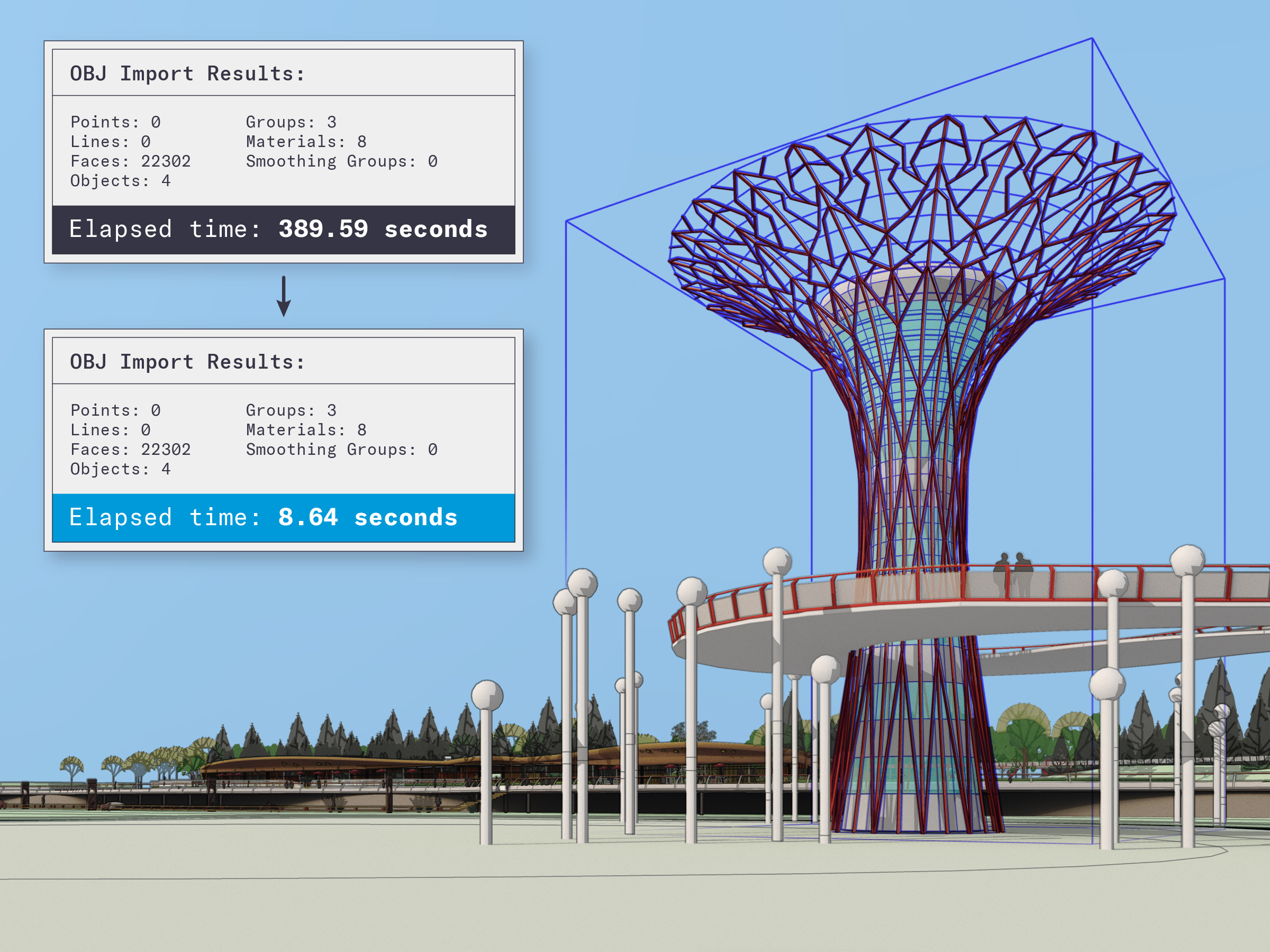How SketchUp Layout Tips Can Help You?

With Auto-Text updates and Find & Replace, LayOut helps you work faster and more efficiently than ever before.
Viewport-based Auto-Text labels
In addition to existing labels that pull entity or component attributes from SketchUp viewports in LayOut, we are introducing new Auto-Text tags that can be selected from the Auto-Text menu in label creation or templated labels.
You can use all of these labels in scrapbooks or with transparent label leaders. This means that you can drag Auto-Text labels in from a scrapbook, hit enter to drag the label leader, and then the value associated with that viewport automatically displays.

These tags include <SceneName>, <SceneDescription>, <Scale>, <Ratio>, and <Coordinates()> parameter input.
With new and improved viewport-based Auto-Text labels, you can use more of the information embedded in SketchUp models while composing documents, making your templates more powerful and efficient. For instance, you can pick your Scene name or description using an Auto-Text tag to automatically populate a drawing title. Then use a <Ratio> tag to show the scale of the current viewport. If the scale of the model viewport changes, the scale call out will automatically update.
Explore how to use them in our Help Center documentation.
Page Management Auto-Text
Manually creating and maintaining a table of contents can be time-consuming and error-prone, but it doesn’t have to be with new enhancements in title block management.
<Page Count>
Complementing our existing <PageNumber> tag, <PageCount> displays the number of pages in a range you can define. With <PageCount>, users can specify the start page (where a particular range starts), character style, and the last page of the range. This feature is useful when developing an index or table of contents at the beginning of your LayOut document.

<Page Name>
With the <PageName> tag, you can use the name of a page that is not the current page. For example, if you want to display the name of a page in the third position of your document, you’ll input <PageNumber(3)>. Even better, the page name dynamically updates when pages are added, deleted, or re-ordered, saving time when developing and finalizing your table of contents.
Sequence Auto-Text
A long-standing feature request, Sequence Auto-Text is a new Auto-Text tag that automatically increments when duplicated. These tags are used to annotate drawings and figures rapidly, create numbered drawing titles, legends, and many other use cases that would previously require text editing between each copy. Like <PageNumber> Auto-Text, you can duplicate and repurpose the Sequence tag as many times as you’d like.
If you delete a sequence tag, you can renumber text boxes for a given sequence tag across an entire document quickly and easily using a single command – Renumber Sequence.
To help you get started with all of the new Auto-Text features in LayOut, we’re adding two new pages to each of LayOut’s title block scrapbooks.
Find & Replace text
There are several ways to quickly create and copy text across multiple pages in a LayOut document, but modifying text across an entire document has always been difficult. You need to inspect every page and text box of your document. That’s why you’ll love Find & Replace in LayOut! With Find & Replace, changes to text in a selection, a page, or a document is a much quicker process. This not only helps speed up the quality assurance process, but you can update drawing titles, page numbers, specified building materials, and fix typos more efficiently.
As in other applications, Find & Replace can be activated with the Ctrl/Command + F shortcut and from the Text menu in LayOut.

Zoom Selection
Eliminate zoom lag with the new Zoom Selection context command adopted from SketchUp. When LayOut pages grow in detail and complexity, they can become hard to navigate with the scroll-to-zoom functionality. Now, you can jump to your desired Zoom level in a given selection in LayOut, lowering the likelihood of unwelcomed lags on zoom in or out.
Performance and Quality Improvements
Native M1 Support for SketchUp on Mac
We are now offering a universal installer that enables SketchUp Pro to run on Mac devices with the M1 hardware platform (introduced in late 2020).
The 2022 installer also supports SketchUp’s installation and operation on Mac devices that have Intel processors. This means Apple users don’t need to determine which chipset powers Mac in order to install SketchUp Pro.
Entities Builder API
Generate large amounts of geometry faster using the Ruby API with the new Entities Builder API interface. For users who generate large amounts of geometry, you’ll notice a much speedier process.

Using the existing .obj importer code in the image above, the tower with 22,000 faces imports at 389 seconds, or about six and a half minutes. With the new Entities Builder API interface, the same tower imports in under nine seconds.
Other noticeable quality improvements include Explode Performance, camera clipping, and section planes.
Listening to you helps us improve SketchUp so that our suite of products remains a vital part of your design workflow. Keep giving us feedback and share your work with us on social media.
If you’re interested in learning more about the 2022 release, check out our full release notes. As always, thanks for choosing SketchUp. If you have any questions or comments, check out our forums.
Subscribe to SketchUp




